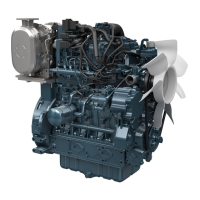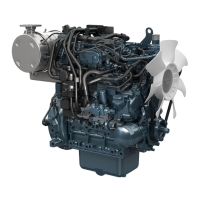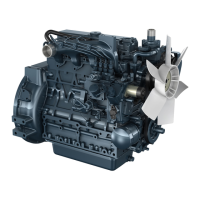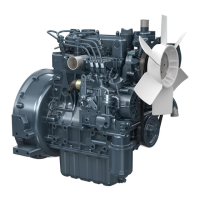7. Click
the [Send
Specified Active Test Value]
button (9).
NOTE
• Confirm that
the each injectors are injecting
normally.
• If it is injecting normally, the engine
vibration and noise will increase and engine
speed will fluctuate when the injector is
stopped.
(9) Send Specified Active Test
Value button
8.
Click the [Finish Active T
est]
button (10).
NOTE
• If it
is determined that there is a failure,
check for a plug in the injection pipe.
• If the injector pipe is normal, this may be an
injector failure so replace the injector using
the procedure for replacing injectors.
(10) Finish Active Test button
RELATED PAGE
7.56 Replacing injector on page 4-191
8.2 Checking EGR cooler
Exhaust gas passage
1. Block the EGR cooler exhaust gas outlet (2).
2.
Attach an air hose to the EGR cooler exhaust gas
inlet (1) and then submerge it in a water tank.
3. Check that the coolant passage is full of water.
4. Apply the specified amount of air pressure (a) to the
air hose side.
EGR cooler
leakage test
pressure
Service speci-
fication
Exhaust gas
passage
290 kPa
3.0 kgf/cm
2
43 psi
(1) Exhaust gas inlet
(2) Exhaust gas outlet
(a)
Air pressure
5. Check that there are no air leaks in any of the EGR
cooler parts.
NOTE
• If there are air leaks, replace the EGR cooler.
6. Install the removed parts.
Coolant passage
1. Block the
EGR cooler exhaust gas inlet (1), EGR
cooler exhaust gas outlet (2), and the coolant outlet
(3).
2. Attach an air hose to the EGR cooler coolant inlet
(4), and then submerge it in a water tank.
3. Apply the specified amount of air pressure (a) to the
air hose side.
EGR cooler
leakage test
pressure
Service speci-
fication
Coolant pas-
sage
250 kPa
2.5 kgf/cm
2
36 psi
3. MAINTENANCE
CHECK AND MAINTENANCE
8.Check points of every 1500 hours
D1803-CR-E4,D1803-CR-TE4,D1803-CR-TIE4,V2403-CR-E4,V2403-CR-TE4,V2403-CR-TE4BG,V2403-CR-TIE4
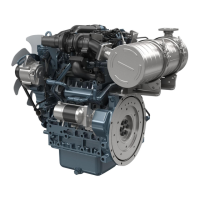
